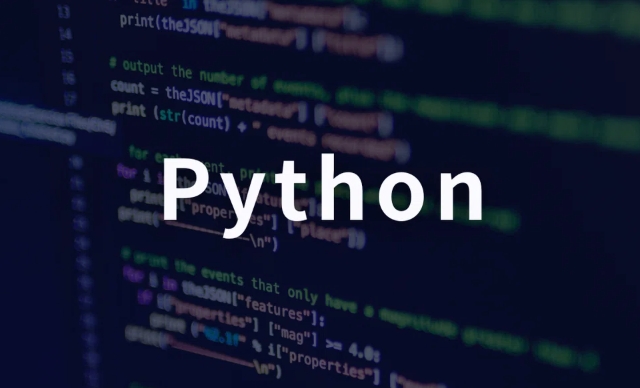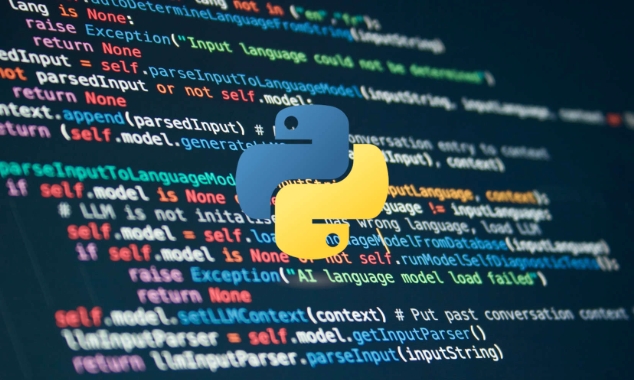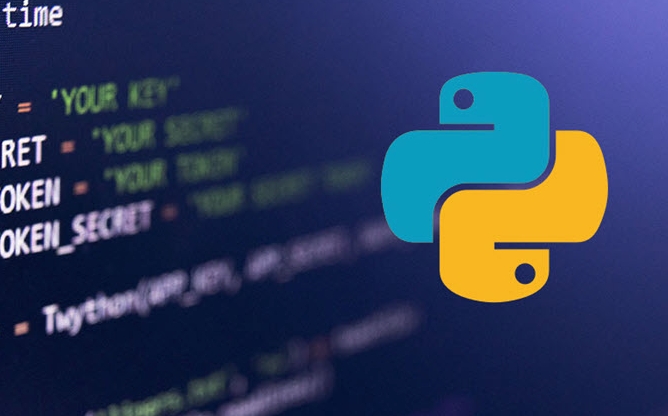The way to access nested JSON objects in Python is to first clarify the structure and then index layer by layer. First, confirm the hierarchical relationship of JSON, such as a dictionary nested dictionary or list; then use dictionary keys and list index to access layer by layer, such as data "details"["zip"] to obtain zip encoding, data "details"[0] to obtain the first hobby; to avoid KeyError and IndexError, the default value can be set by the .get() method, or the encapsulation function safe_get can be used to achieve secure access; for complex structures, recursively search or use third-party libraries such as jmespath to handle.

It is not difficult to access nested JSON objects in Python. The key is to figure out the structure and then search down one by one. JSON is essentially very similar to Python's dictionary and list structure, so as long as you understand the hierarchical relationship, you can easily get the value.

First look at the structure: confirm how your JSON is nested
After getting a JSON data, the first step is to see what structure it is. For example, the following example:
{
"name": "Alice",
"details": {
"age": 30,
"location": {
"city": "Shanghai",
"zip": "200000"
},
"hobbies": ["reading", "cycling"]
}
}This is a typical nested structure:

-
detailsis a dictionary -
locationis another dictionary nested indetails -
hobbiesis a list
If you don't know the structure, you can first use print(json_data) or online formatting tools to see the hierarchical relationship.
Layer-by-layer access using dictionary and list index
Python handles this structure very simple, just "drill in" layer by layer.

For example, to obtain the zip code of the city where Alice is located, you can write it like this:
zip_code = data["details"]["location"]["zip"]
If it is a list, such as hobbies, you want to get your first hobbies:
first_hobby = data["details"]["hobbies"][0]
A few points to note:
- Does the field exist? If you are not sure, it is recommended to use
.get()to avoid errors - Is there an element in the list? It is best to judge the length before visiting
- When the nesting is too deep, remember to do it step by step and don't write too long expressions at once.
Secure access tips: Avoid KeyError and IndexError
Direct access using [] can sometimes error, especially if the field may not exist or the list is empty. At this time, you can use the .get() method to match the default value:
city ??= data.get("details", {}).get("location", {}).get("city") If no intermediate step is found, None will be returned (or the default value you specified) and will not crash directly.
It can also be encapsulated into a small function:
def safe_get(data, *keys):
for key in keys:
if isinstance(data, dict) and key in data:
data = data[key]
else:
return None
return dataCall method:
city ??= safe_get(data, "details", "location", "city")
What if the structure is complicated?
Some JSONs are particularly deep nested, or the field names are dynamically generated, and even array nested objects. You can consider this at this time:
- Find specific fields using recursive traversal
- Third-party libraries such as
jmespathto do advanced query
But in most daily scenarios, the above method is enough.
Basically that's it. The core is to see the structure clearly, access it layer by layer, and pay attention to safely dealing with exceptions.
The above is the detailed content of Access nested JSON object in Python. For more information, please follow other related articles on the PHP Chinese website!

Hot AI Tools

Undress AI Tool
Undress images for free

Undresser.AI Undress
AI-powered app for creating realistic nude photos

AI Clothes Remover
Online AI tool for removing clothes from photos.

Clothoff.io
AI clothes remover

Video Face Swap
Swap faces in any video effortlessly with our completely free AI face swap tool!

Hot Article

Hot Tools

Notepad++7.3.1
Easy-to-use and free code editor

SublimeText3 Chinese version
Chinese version, very easy to use

Zend Studio 13.0.1
Powerful PHP integrated development environment

Dreamweaver CS6
Visual web development tools

SublimeText3 Mac version
God-level code editing software (SublimeText3)

Hot Topics
 How to iterate over two lists at once Python
Jul 09, 2025 am 01:13 AM
How to iterate over two lists at once Python
Jul 09, 2025 am 01:13 AM
A common method to traverse two lists simultaneously in Python is to use the zip() function, which will pair multiple lists in order and be the shortest; if the list length is inconsistent, you can use itertools.zip_longest() to be the longest and fill in the missing values; combined with enumerate(), you can get the index at the same time. 1.zip() is concise and practical, suitable for paired data iteration; 2.zip_longest() can fill in the default value when dealing with inconsistent lengths; 3.enumerate(zip()) can obtain indexes during traversal, meeting the needs of a variety of complex scenarios.
 What is descriptor in python
Jul 09, 2025 am 02:17 AM
What is descriptor in python
Jul 09, 2025 am 02:17 AM
The descriptor protocol is a mechanism used in Python to control attribute access behavior. Its core answer lies in implementing one or more of the __get__(), __set__() and __delete__() methods. 1.__get__(self,instance,owner) is used to obtain attribute value; 2.__set__(self,instance,value) is used to set attribute value; 3.__delete__(self,instance) is used to delete attribute value. The actual uses of descriptors include data verification, delayed calculation of properties, property access logging, and implementation of functions such as property and classmethod. Descriptor and pr
 What is a forward reference in Python type hints for classes?
Jul 09, 2025 am 01:46 AM
What is a forward reference in Python type hints for classes?
Jul 09, 2025 am 01:46 AM
ForwardreferencesinPythonallowreferencingclassesthatarenotyetdefinedbyusingquotedtypenames.TheysolvetheissueofmutualclassreferenceslikeUserandProfilewhereoneclassisnotyetdefinedwhenreferenced.Byenclosingtheclassnameinquotes(e.g.,'Profile'),Pythondela
 Parsing XML data in Python
Jul 09, 2025 am 02:28 AM
Parsing XML data in Python
Jul 09, 2025 am 02:28 AM
Processing XML data is common and flexible in Python. The main methods are as follows: 1. Use xml.etree.ElementTree to quickly parse simple XML, suitable for data with clear structure and low hierarchy; 2. When encountering a namespace, you need to manually add prefixes, such as using a namespace dictionary for matching; 3. For complex XML, it is recommended to use a third-party library lxml with stronger functions, which supports advanced features such as XPath2.0, and can be installed and imported through pip. Selecting the right tool is the key. Built-in modules are available for small projects, and lxml is used for complex scenarios to improve efficiency.
 how to avoid long if else chains in python
Jul 09, 2025 am 01:03 AM
how to avoid long if else chains in python
Jul 09, 2025 am 01:03 AM
When multiple conditional judgments are encountered, the if-elif-else chain can be simplified through dictionary mapping, match-case syntax, policy mode, early return, etc. 1. Use dictionaries to map conditions to corresponding operations to improve scalability; 2. Python 3.10 can use match-case structure to enhance readability; 3. Complex logic can be abstracted into policy patterns or function mappings, separating the main logic and branch processing; 4. Reducing nesting levels by returning in advance, making the code more concise and clear. These methods effectively improve code maintenance and flexibility.
 Implementing multi-threading in Python
Jul 09, 2025 am 01:11 AM
Implementing multi-threading in Python
Jul 09, 2025 am 01:11 AM
Python multithreading is suitable for I/O-intensive tasks. 1. It is suitable for scenarios such as network requests, file reading and writing, user input waiting, etc., such as multi-threaded crawlers can save request waiting time; 2. It is not suitable for computing-intensive tasks such as image processing and mathematical operations, and cannot operate in parallel due to global interpreter lock (GIL). Implementation method: You can create and start threads through the threading module, and use join() to ensure that the main thread waits for the child thread to complete, and use Lock to avoid data conflicts, but it is not recommended to enable too many threads to avoid affecting performance. In addition, the ThreadPoolExecutor of the concurrent.futures module provides a simpler usage, supports automatic management of thread pools and asynchronous acquisition
 What is a class in Python?
Jul 09, 2025 am 01:13 AM
What is a class in Python?
Jul 09, 2025 am 01:13 AM
Classes in Python are blueprints for creating objects, which contain properties and methods. 1. An attribute is a variable belonging to a class or its instance, used to store data; 2. A method is a function defined in a class, describing the operations that an object can perform. By calling the class to create an object, for example, my_dog=Dog("Buddy"), Python will automatically call the constructor __init__init__init object. Reasons for using classes include code reusability, encapsulation, abstraction, and effective modeling of real-world entities. Classes help keep the code clear and maintainable when building complex systems.
 Working with JSON data type in MySQL
Jul 08, 2025 am 02:57 AM
Working with JSON data type in MySQL
Jul 08, 2025 am 02:57 AM
MySQL supports JSON data types introduced since version 5.7 to handle structured and semi-structured data. 1. When inserting JSON data, you must use a legal format. You can use JSON_OBJECT or JSON_ARRAY functions to construct, or pass in the correct JSON string; 2. Updates should use JSON_SET, JSON_REPLACE, JSON_REMOVE to modify some fields instead of the entire replacement; 3. Query can extract fields through JSON_CONTAINS, -> operators, and note that the string value needs to be double quoted; 4. It is recommended to create a generated column and index to improve performance when using JSON type.






